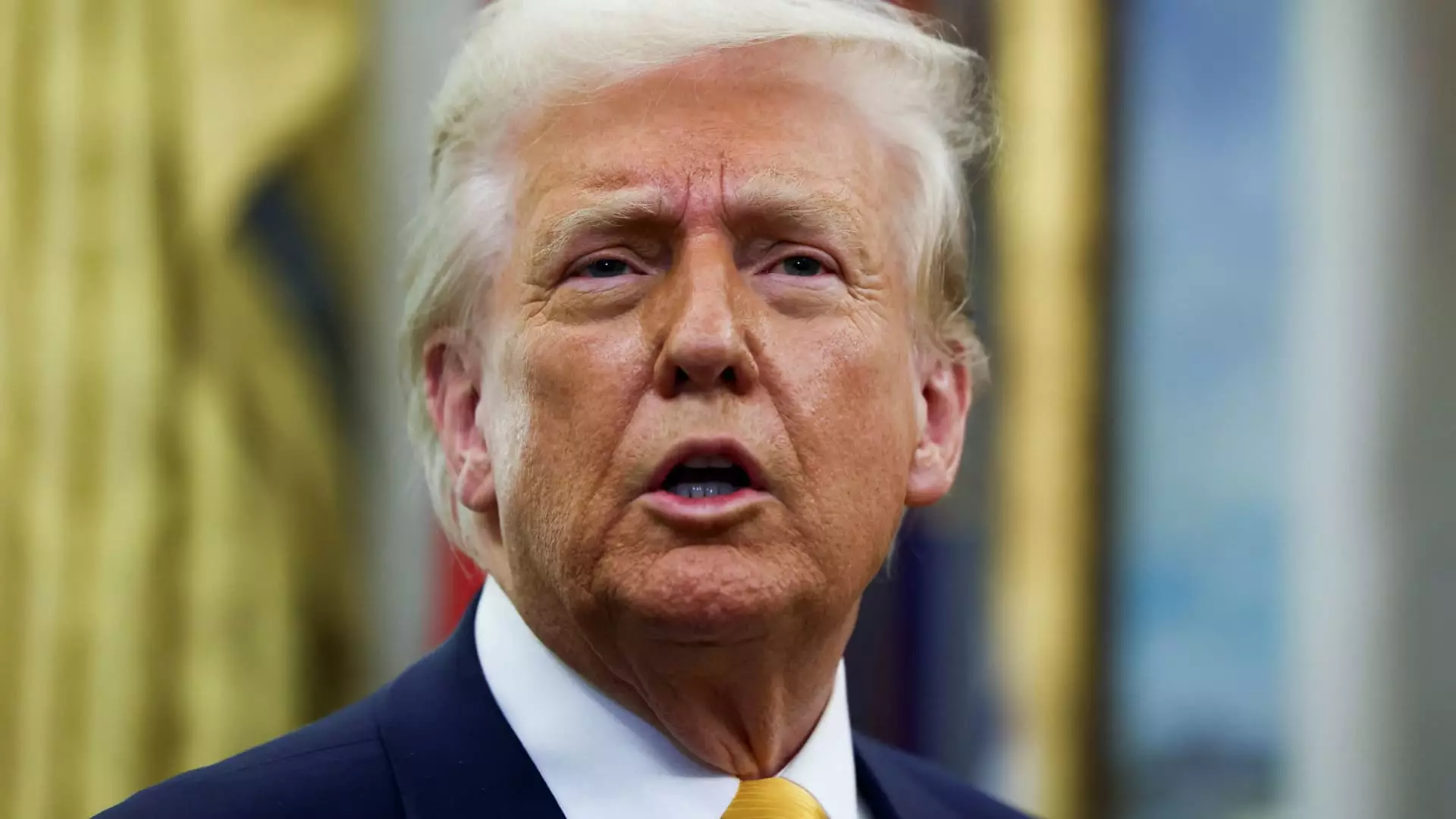In the complex and often chaotic realm of economics, the dichotomy between stock market fluctuations and the long-term health of the economy frequently leaves analysts and the public scratching their heads. The recent downplay from the White House regarding weeks of stock market sell-offs illustrates this very point, showcasing a strong contrast between the emotional impulses driving market movements and the undercurrents of actual economic performance. While the White House insists that businesses hold a brighter perspective of the economy, a closer examination reveals a harrowing reality where optimism is increasingly overshadowed by fear and uncertainty.
The phenomenon coined “animal spirits”—a term first popularized by the economist John Maynard Keynes—serves to highlight the notion that human emotions, not just cold hard data, play a critical role in economic decision-making. The White House’s comments lean heavily on this term as a euphemism for “irrational investor behavior,” attempting to detach the day-to-day volatility of the stock market from the more stable foundations of business investment and consumer confidence.
The Market’s Distressing Performance
The reality, however, is stark and cannot be diluted by hopeful rhetoric. The Dow Jones Industrial Average plummeted nearly 900 points on a recent Monday—a loss that is more than just a trickle in investor confidence; it’s a torrent. This catastrophic day on the trading floor was not merely a blip; rather, it was the culmination of three weeks of escalating crises. With the S&P 500 and Nasdaq also experiencing severe declines, what should have been an upward trajectory of recovery following previous gains has devolved into a panic-induced nosedive.
What disturbs me most is how easily the notion of confidence can collapse. The expert analysis highlights concern over President Trump’s trade policies, particularly the impact of his erratic imposition of tariffs on imports from neighboring Canada and Mexico. Such policies convey an unsettling message to investors, stirring doubts about the stability of American trade relationships and illuminating the precariousness of business planning in an unpredictable regulatory landscape.
The Firing Line: Consequences of Mass Layoffs
Compounding this uncertainty have been waves of mass layoffs in government sectors, orchestrated by none other than Elon Musk, a man who thrives on bold, often reckless business maneuvers. This radical approach further propagates fears among investors, who now perceive deeper issues beneath the surface of the economy and view potential investment as high-risk. Could it be that the optimism which charmed the markets during Trump’s initial term is being undermined by his administration’s recent decisions? It certainly appears that way.
Scott Lincicome from the CATO Institute points towards a heightened awareness of risk factors—rising prices being one of the primary concerns. As prices balloon and the environment becomes increasingly unpredictable, consumer sentiment takes a hit, affecting spending behavior and eventually business decisions. It isn’t merely pessimism that is at play; it’s an impactful narrative of cascading uncertainties that could yield a self-fulfilling prophecy.
Investment Promises vs. Reality
In a bid to salvage a more favorable image, the White House shifts focus to significant pledges from major corporations, like Apple’s ambitious $500 billion plan for future investments in the U.S. However, is this appealing from the top-down enough to assure the wary investor base? Rhetoric in politics often lacks the bite of reality, as we should be cautious in interpreting mere pledges as indicators of sustainable economic growth. The juxtaposition between such promises and the ongoing stock market dips raises questions about the underlying motivations behind these investments; are they genuinely built on confidence or merely reactive in nature, designed to placate an anxious public?
The White House’s narrative claims that enthusiasm for Trump’s second term will rejuvenate job markets and wage growth, but it feels disingenuous when faced with alarming market realities. Voters, too, deserve more than mere platitudes; they deserve transparency. It’s disappointing when political communications seem insulated from the pressing concerns of everyday citizens, who may feel the emotional and financial fallout from these rapidly changing economic landscapes.
By attempting to brush aside the market turmoil with buoyant statements, we risk distracting from the real anxiety brewing in the heart of the American economy. All signs suggest that our economic health cannot be decoupled from the emotional responses elicited by the actions of our leaders. When will we face the raw truths?

